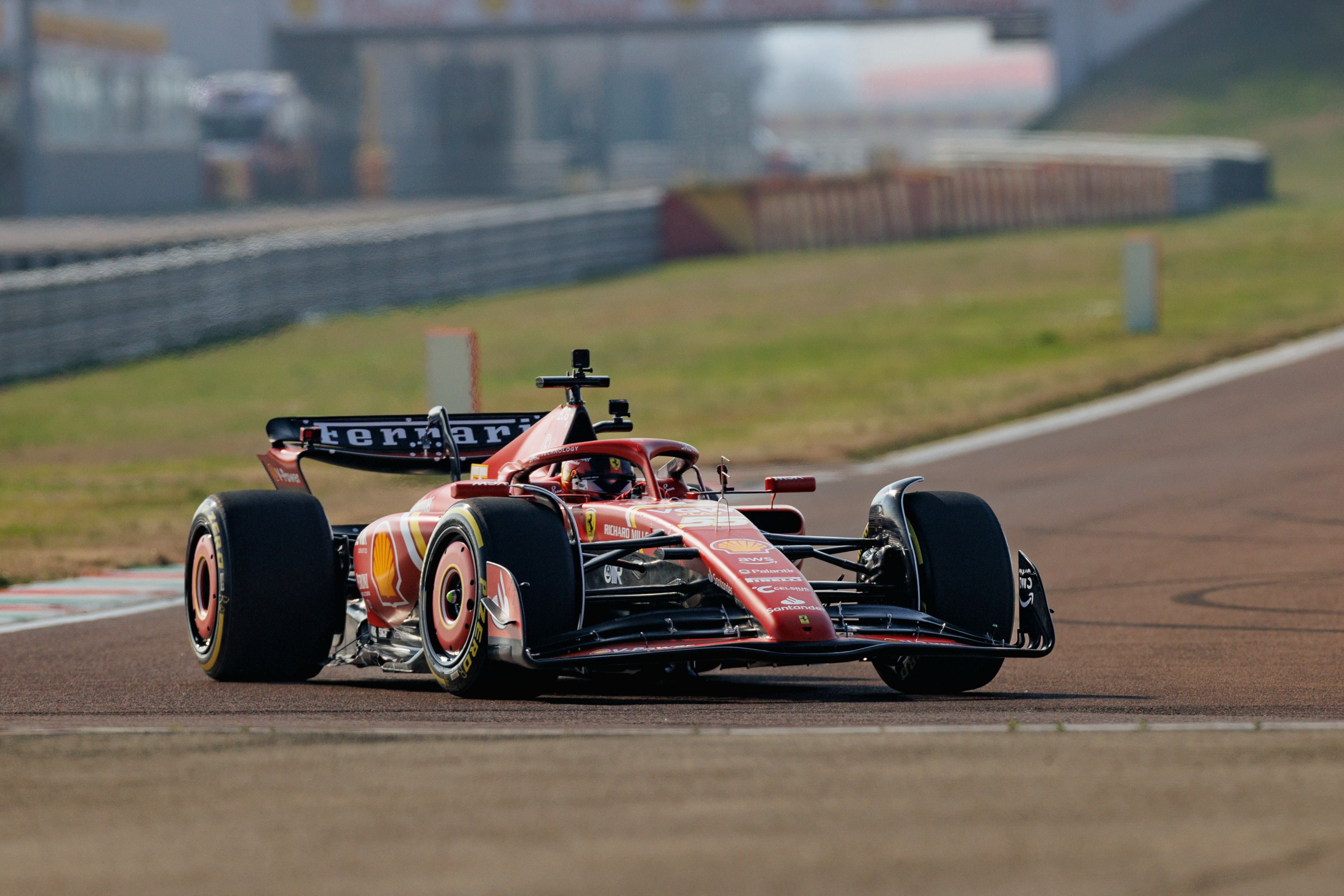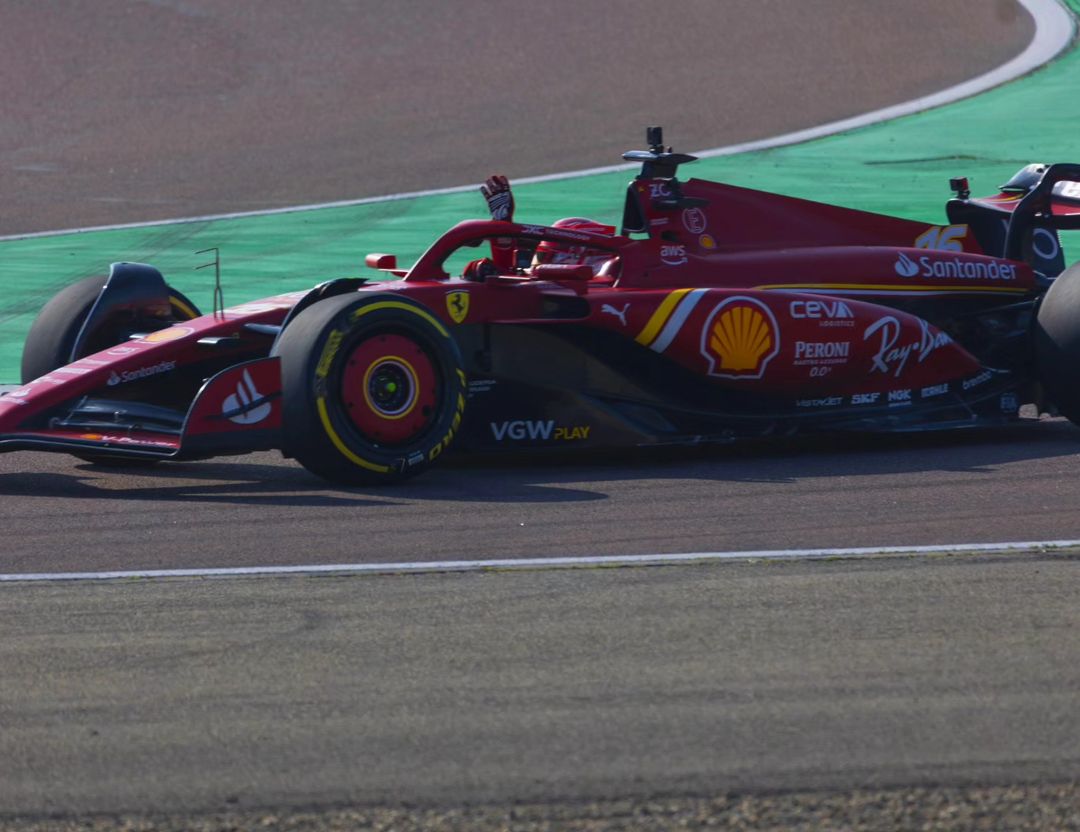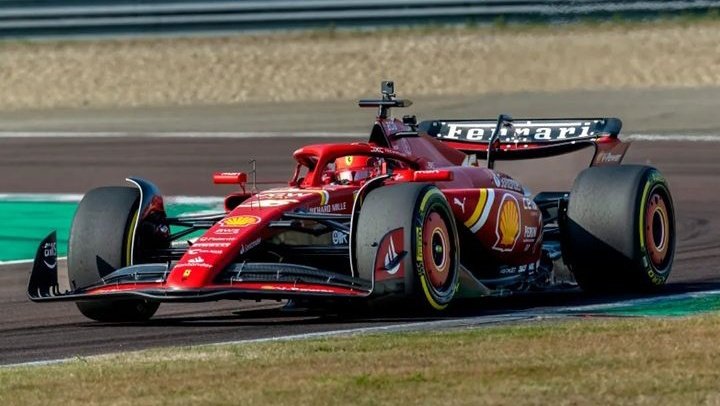https://formu1a.uno/la-sospensione-post ... nnovativa/
The Ferrari SF-24 was unveiled through a short official video released by the Scuderia. No special event, in continuity with the low-profile approach desired by Frederic Vasseur. Expectations and ambitions will only be indicated by the track once the race car has been transported to Bahrain and competes with direct competitors in the three days of testing, but especially during the first weekend of the new Formula 1 season. Meanwhile, for the first indications, Carlos Sainz and Charles Leclerc covered their first 15 km at Fiorano today and are ready to return to the track tomorrow for the 200 km filming day that will provide more information to the drivers and engineers of the Maranello team.
Ferrari SF-24: the front suspension is revised in kinematics but there has been crossover with the 2023 specification
The Ferrari shown a few hours ago is the first car of the Italian team that will fully exploit the downwash concept, after using a mixed concept from the Spanish GP of the last season. This is also why there are no major innovations externally, with the use of solutions already seen on many cars from the past season.
However, what speaks the most is the choices made by the technical staff led by Enrico Cardile regarding the mechanical part of the SF-24. The front suspension remains push-rod even though "there has been some crossover with the SF-23 specification," said the technical director of the Italian team. The kinematics have been revised, with work done in that area consisting of providing a greater anti-dive effect, while keeping most of the internal elements. This is a choice that follows the Red Bull ideology, albeit with a different scheme, seeking greater overall stability, especially of the aerodynamic platform.
Ferrari SF-24: the pull-rod rear suspension is innovative according to Cardile
Ferrari, along with Haas, which buys the entire mechanics from the Italian team, will be the only team in the 2024 F1 season to use pull-rod suspension at the rear. "During the development, not only of this car but also of the previous one, we studied the different layout of suspensions for our goals, so also the push-rod, and we found a good compromise with the current layout," said Enrico Cardile in a press conference on the sidelines of the SF-24 presentation. From a mechanical point of view, it's always a matter of compromises, as already stated in the analysis of Mercedes' new rear suspension, and Cardile also wanted to underline this. "I'm talking about the compromise between aerodynamic performance, weight, suspension compliance, and so on. During this season, we don't intend to change the suspension layout. Then we'll see during development, but so far, we are satisfied with this configuration."
On this generation of cars, according to the opinion of many professionals (technicians), the push-rod configuration at the rear presents a clear aerodynamic advantage over the pull-rod configuration since the internal elements are positioned high, allowing to reduce the section of the front part of the transmission, freeing up space in the floor. However, Ferrari has considered that the push-rod suspension did not give such a clear advantage to justify the change. "We preferred to deepen and optimize a solution on which we already have a lot of knowledge (pull-rod)," said the Italian technical director. Formu1a.uno can reveal that with the rear suspension of the SF-23, a significant effort was already made to miniaturize the internal components to minimize the bulk in a very delicate position of the race car. With the 2024 specification, another step forward has been taken with an even more in-depth redesign.
"The rear suspension of the SF-24 has an innovative concept for us, different from that of recent years. The elements inside the gearbox have been allocated differently. It's a very different way of managing these components," explained Technical Director Enrico Cardile. The attachment of the tie rod has changed massively, moved much further back than the suspension specification used on the SF-23. From the point of view of the triangles, as at the front, the direction has been to increase anti-lift and anti-squat, with the lowering of the front arm of the upper triangle, a advantageous choice to keep the aerodynamic platform as stable as possible under braking and acceleration.
Seems like they are confident with the suspension choice. I just hope they don't face any mechanical failures from too many "innovative" changes.







